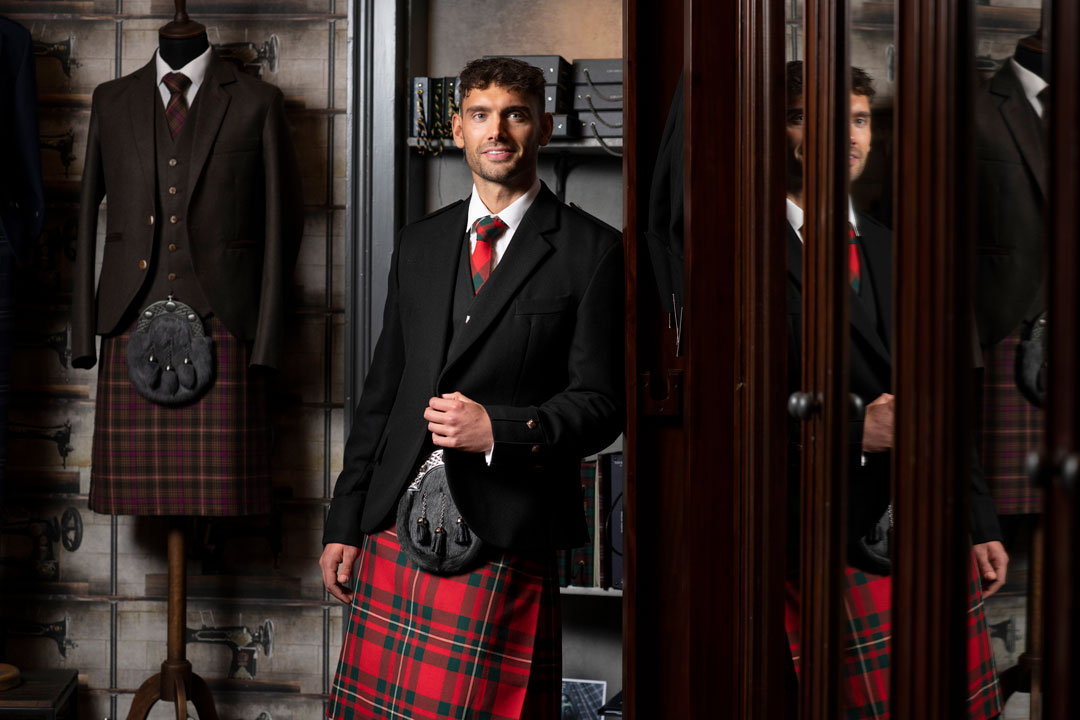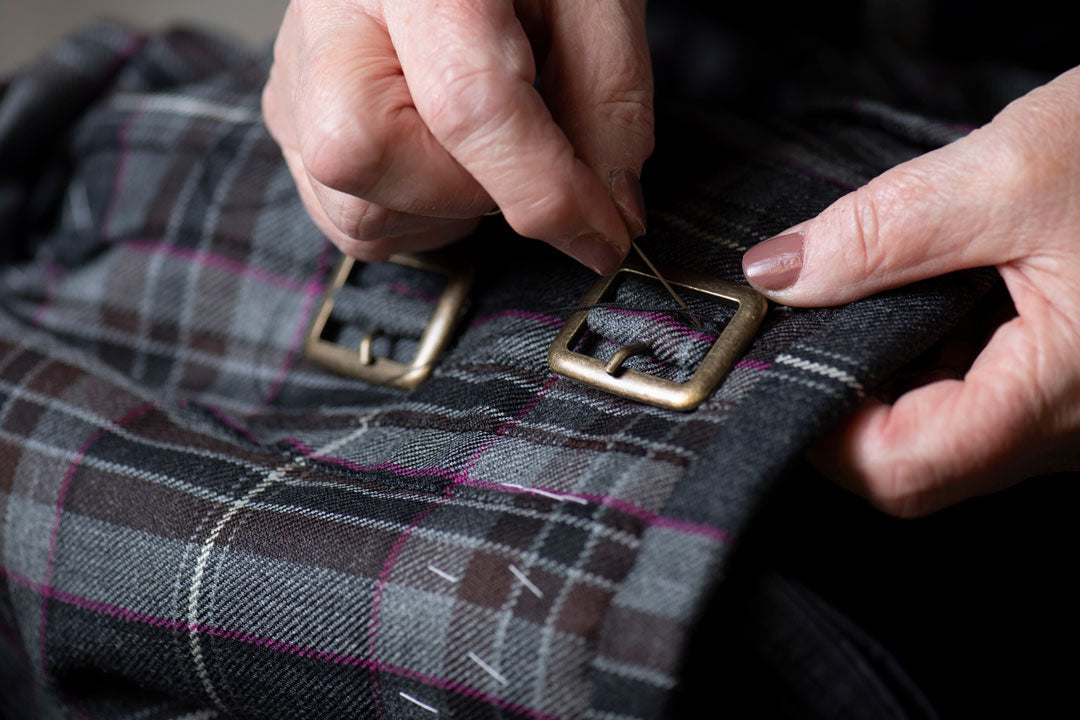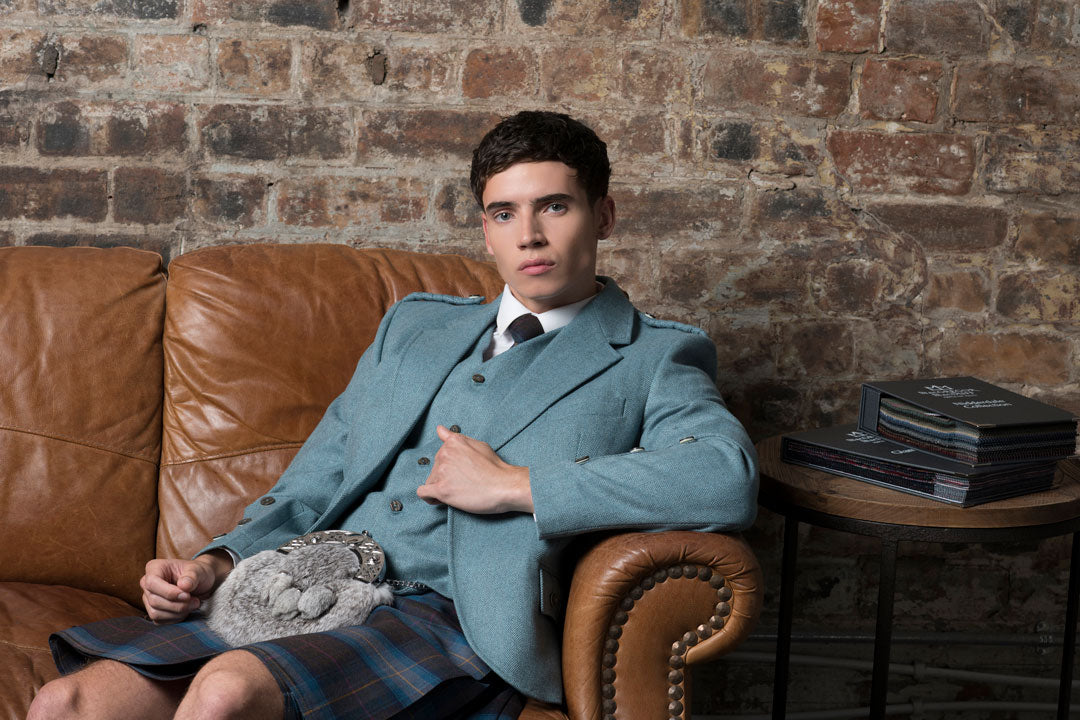Tartan is a traditional Scottish fabric pattern characterized by intersecting lines and vibrant colors running both horizontally and vertically. Originating in Scotland as early as the 3rd century, tartan plays a crucial role in Scotland's culture and history. Each Scottish clan historically had its own unique tartan pattern, symbolizing its identity and heritage. By the 18th century, tartan had become synonymous with Highland dress. Following the Jacobite's defeat at the Battle of Culloden, the British government banned tartan and all other aspects of Highland culture as a form of punishment. Today, tartan remains a powerful symbol of Scottish pride and heritage.
 What are the Origins of Clan Tartans?
What are the Origins of Clan Tartans?
Tartan is a pattern not unique to Scotland, with records of similar cloth dating back to 3,000 BC. While woven patterns and colors were common wherever cloth was produced, only Scotland assigned specific meanings and names to its tartan designs. It is believed that tartan began to gain symbolic significance in Scotland before the 17th century. Contrary to popular myth, clan tartans were not used to identify allies and enemies in battle. Instead, clan members often wore strips of colored cloth on their bonnets or shirts for identification. Before the 18th century, specific clan tartans likely did not exist, though certain patterns and colors were more prevalent in different regions of Scotland. It wasn't until the late 1700s, with the rise of large-scale commercial weavers and the repeal of the Dress Act of 1746, that clans began adopting distinct tartans.
 What types of tartan are there?
What types of tartan are there?
Tartan designs are generally classified into three categories: Clan Tartans, Universal Tartans, and Restricted Tartans.
Clan Tartans: Representing specific clans, these tartans are available in both ancient and modern variants. Ancient clan tartans have lighter colors, as originally they were created using vegetable dyes and natural pigments. Modern clan tartans are vibrant, updating the original designs with bolder colors. While there was historically some prejudice against wearing a kilt in a clan tartan if you were not a clan member, today there are no such restrictions. Anyone can wear any clan tartan, regardless of their heritage.
Universal Tartans: These tartans have been designed without any clan association, making them a great choice for those uncomfortable wearing a tartan linked to a specific family name. Universal tartans often feature modern designs and may diverge from traditional tartan patterns.
Restricted Tartans: These tartans come with special usage rules. For example, our Mist range of tartans is restricted, with MacGregor and MacDuff having exclusive rights to authorize who can weave or sell products using the design. Another example is the royal Balmoral tartan, which requires permission from the head of the monarchy to wear or use in clothing.
Understanding these categories can help you choose the right tartan for any occasion, whether honoring a clan heritage, embracing a universal design, or adhering to the specific rules of a restricted tartan.
 What is the most popular tartan?
What is the most popular tartan?
The great thing about tartan is that each design is so unique and everyone has their own preferences. The result of this is that there isn’t just one tartan that stands out from the rest and in the same regard, there are many wonderful tartans that are rarely seen. There are a few tartans that are more well-known than others though. Due to its bright design and royal connection, the Royal Stewart tartan is one of the most recognisable tartans in the world. The Royal Steward is often the tartan that comes to mind when people think of tartan, especially those outside of Scotland. Another very recognisable tartan is the MacLeod of Lewis, affectionately known as the Loud MacLeod thanks to its bright yellow and black design.

How do I choose a tartan?
When starting to think about their tartan choice, people will look for a tartan that has a personal connection to them. This may be a family or clan connection or even just a tartan that invokes a memory or emotion. The main thing to focus on is finding a tartan that you enjoy the look of. There's no point in buying a kilt or a pair of trews in a tartan that you have a family connection with if you don’t like the look of the design. Remember, a kilt can last for a lifetime and beyond so make sure you don’t choose a tartan that you’ll end up disliking. The other thing to consider is the full outfit colour scheme and more importantly, what jacket you will be wearing with your kilt. Black jackets are easy as they match with all tartans but if your favourite jacket colour is navy, then make sure the tartan you choose works well with navy. It boils down to preference and you should spend a little time considering what you like as well as the full look of the highlandwear outfit you are trying to achieve. Our tartan finder can be a great help for browsing through all of your tartan options. If you still can’t find your favourite tartan, check out our Tartan Design Service where you can design your very own tartan.

At MacGregor and MacDuff we have a wide range of products we can offer you in your favourite tartan. From full kilt outfits to tartan trews and trousers to tartan accessories like scarves and neckwear. If you are looking for something tartan, we can help. For any questions or if you would like to know more about your tartan options, contact our team by emailing info@macgregorandmacduff.co.uk, we’d be happy to help.

